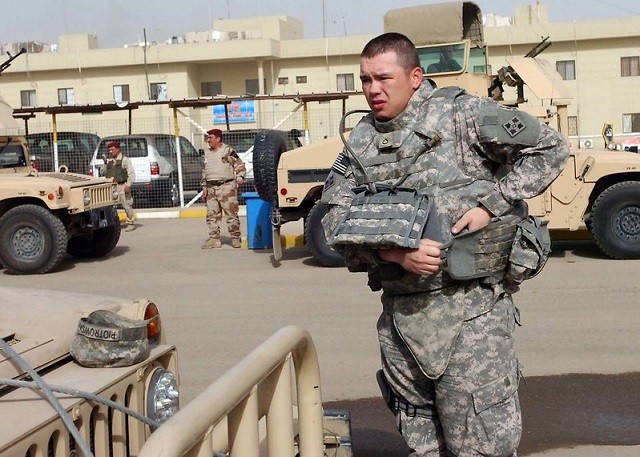Since body armor is life-saving gear, if you are going to wear it, you cannot neglect its quality and performance. This doesn’t just apply to law enforcement officers who use it as a part of their duty. Anyone using it even occasionally need to be equally watchful about the integrity of this essential piece of survival gear. While you need to be very sure about buying a product that has a manufacturer warranty for its ballistic performance, going the extra mile to assess its condition from time to time makes sense.
What are Body Armor Warranties?
Essentially, the warranty is meant to indicate the specific period of ballistic performance of the protective vest or plates. But – and this is important – the actual performance of each individual piece depends on how you use, store, and maintain it. The kind of environmental exposure it gets also plays a factor.
Although there is no one-size-fits-all rule for replacement of body armor, there are still some things that you need to consider for deciding when it is time to replace or upgrade your armor. And surely, this is something you shouldn’t compromise with because personal safety is at stake. Let us highlight the fact to be borne in mind for body armor replacement.
Expiration Dates and Manufacturer Warranties
Body armor has come a long way since the Medieval period where soldiers wore heavy suits of metal armor. Today’s armor may not hold up as long, but it’s also much easier to wear.

All modern armor panels used in bulletproof vests and protective gear have a label showing the expiration date. As a smart buyer, you should check the date and ensure that you switch to a new vest before the expiry. If you check body armor news blog, you will find that most of the products come with the expiration date of five years. But there may be deviations for different brands.
Similarly, you also need to see the manufacturers’ warranty of the armor. However, sticking to the dates is surely not a sensible approach if the actual condition of the piece isn’t good enough. Regular inspection of the armor, therefore, is vital. While law enforcement should be vigilant about the condition of the armor at all times, people who carry it on hunting trips should conduct a stringent check before every excursion.
Change in Body Weight and Shape Warrants Replacement
Haven’t been following the Navy SEAL physical fitness guide and you’ve put on excess weight? Or maybe you have and you’ve slimmed down and packed on muscle. Either way, body changes mean changes to body armor fit.
Bulletproof vests are meant to fit perfectly in order to offer the level of protection you expect them to. When you gain or lose weight, it can actually decrease the level of protection and the lifespan of the body armor as well. If you lose too much weight, the ballistic panels experience excessive stress as they are able to move inside of the carrier rather than be a snug fit against the body.

Conversely, excess weight gain can lead to the vest creasing and damaging the ballistic panels. Excess weight can also cause parts of the body to become unprotected. So you will certainly have to substitute quickly if there is a change in your weight and body shape. It is important to wear a good fit and make the requisite adjustments ensure that it works as well as it possibly can.
Usage of Body Armor Makes all the Difference
Another factor that determines the average replacement period for body armor is usage – how often you use it, the purpose it is used for, and the kind of threats it has to bear. According to experts at Engarde Body Armor, the quality of the carrier and ballistic panel makes all the difference. But obviously, an officer’s vest will have to be replaced earlier than that for someone who wears it occasionally for personal safety reasons. The reason is evident – heavy usage causes wear and tear at a more rapid pace.
While a ballistic panel should be replaced immediately after being shot, a visual check of the panel cover is also recommended on a regular basis. Check for tears, cuts and sealing issues and excessive wear as well. All of these could expose the ballistic material to moisture and other degrading factors. Soft armor panels come with a waterproof cover which safeguards the ballistic material within the cover from moisture. Moisture can severely impair the ballistic performance of the panel and can cause degradation as well.
Body Armor Maintenance and Storage is Vital
The longevity of body armor greatly depends on how well you maintain and store it over time. Maintaining and storing in accordance with the instructions on the manufacturer’s manual is the key to prolonging its use. Regular cleaning of the carrier is a must while the interior should be protected from direct contact with sunlight and liquids.
For storage, you need to choose a place where the vest can rest in a flat position. Hanging the vest or storing it in a drawer is a bad idea because it will affect the integrity of the garment over a period of time. Once again, regular inspection of the ballistic panel covers makes sense even if you do not use it frequently. Carriers that rub the panel covers due to normal flexing can wear through the cover and expose the armor to moisture penetration, so being extra careful is important while you wear or store the vest.
Condition of the Carrier Requires Attention as Well
It is to be noted that the carrier may also become damaged over time. Replacing a carrier on a regular basis is important because they have an optimal lifespan as well. If it doesn’t fit well, the straps appear to be stretched or the Velcro doesn’t seem to be working properly, it is time to switch. The carrier deserves careful attention because the protection level of the body armor may be affected if you wear a damaged carrier. Regular inspection of the carrier should be, therefore, be a part of your body armor assessment and maintenance routine.
Why Shouldn’t You Wear Expired or Damaged Body Armor?
Wearing expired or damaged body armor is better than having no protection at all because it would probably provide some protection against deadly force. Though it may not be penetrable, the internal components are susceptible to warping, cracking, or denting, which can cause serious bodily harm. Since it can make the difference between life and death, this is something you should compromise with.
It is to be noted that soft armor deteriorates faster than the hard counterpart and is particularly vulnerable to moisture and heat. If it happens to get completely saturated with water, you must replace it immediately.
When it comes to protecting with body armor, you should be safe rather than sorry because you may not get a second chance. Today’s body armor may not be the equivalent of Mandalorian armor, but it’s come a long way from the past.

1 comment
Soft armour and hard armour are not really going to be affected by age unless stored poorly. That’s their WARRANTY, not EXPIRATION.
Ceramics are metastable and will remain perfectly serviceable for decades. Same with soft armour, especially since its basically waterproofed inside that plastic wrapper of the plate.
Soft armour standalone will probably want replacement regularly due to sweat, but still it can be put into service for 15, 20 yrs, though you may push it a slight bit.